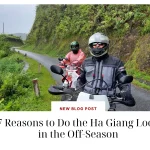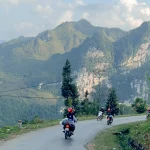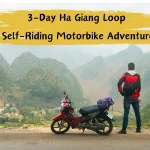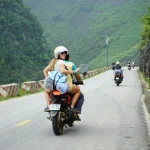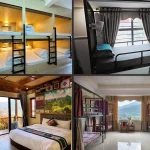The Ha Giang Loop, an intricate 350-kilometer journey through the rugged mountains of northern Vietnam, offers visitors breathtaking views and authentic cultural experiences. However, as enticing as it sounds, it is not without its challenges. Venturing into this enchanting landscape demands meticulous planning and preparation. From transportation to packaging, each decision impacts the outcome of your journey. In this article, Karst Plateau will give you 10 mistakes to avoid, ensuring you have a safe adventure and many memorable memories.
1. Planning & Preparation
1.1 Not Booking Transportation in Advance
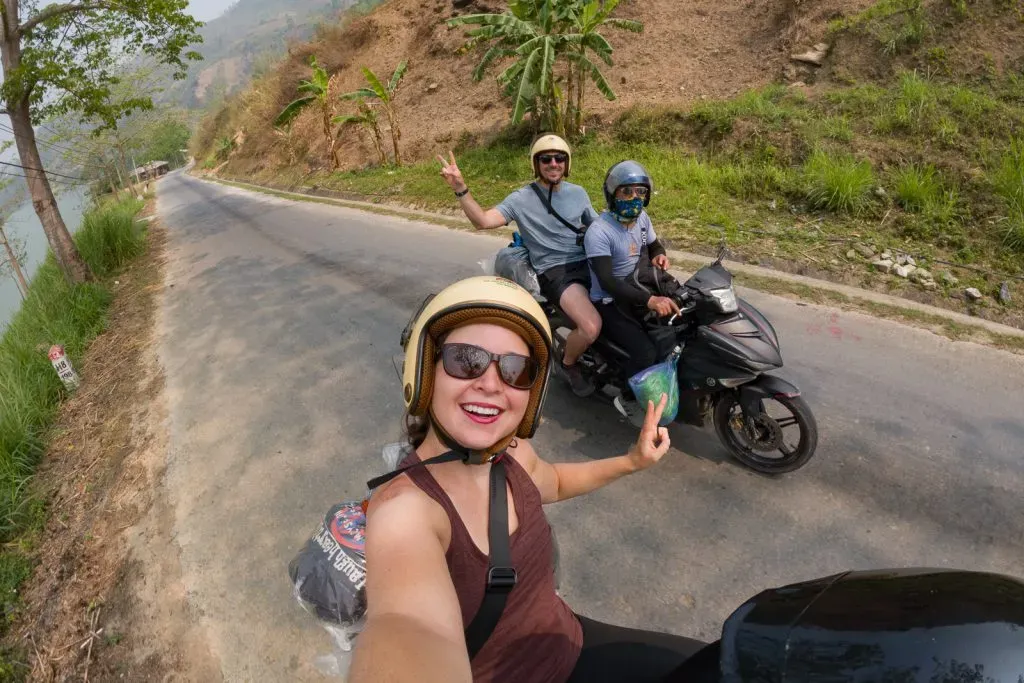
You should make a detailed plan before going
Not booking transportation in advance is a primary setback many travelers face. Imagine standing at the edge of your grand adventure, only to realize your transport is unavailable. This common mistake can derail entire itineraries and result in unnecessary delays. The Ha Giang Loop spans about 350 kilometers of mountainous terrain, requiring careful planning.
With meticulous planning, you’ll avoid the stress of missing out on important attractions. You should plan in advance in detail including booking a motorbike, researching car rental agreements, and making sure you get the right vehicle for your journey.
For those considering tours, prices range from 2 to 5 million VND (~80 – 200 USD). You should book in advance to avoid last-minute price spikes or room shortages. Such thoughtful planning can transform your experience from chaotic to captivating, making each stop count without the worry of schedule delays.
1.2 Not Getting a Ha Giang Permit
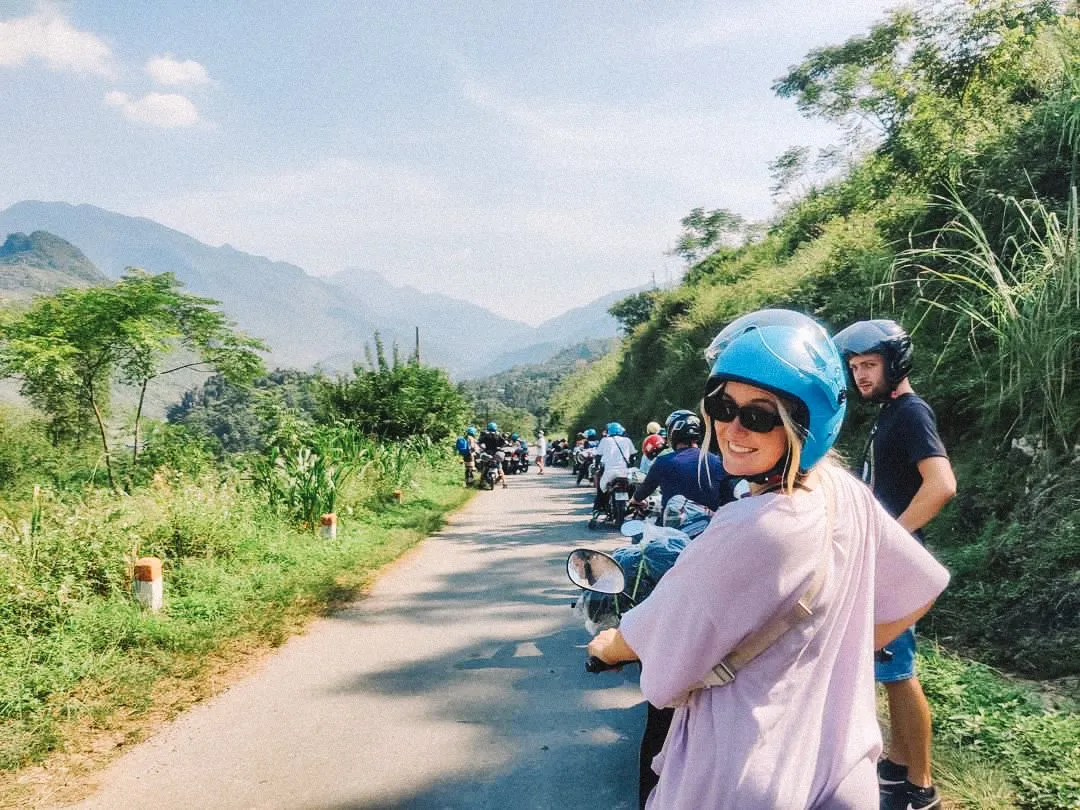
An advanced permit not only secures your entry but also allows you to plan your itinerary with confidence, ensuring a stress-free adventure
The Ha Giang Loop is a gem that requires specific permits due to its location near the Chinese border. Failing to obtain the required permit is a rookie mistake that can have serious consequences. Without the permit, you might face checkpoints, hefty fines, or even be turned away, disrupting your plans entirely.
The permit can be obtained through travel agencies or directly from local authorities. The process is straightforward but must be initiated at least 2-3 weeks before your trip. An advanced permit not only secures your entry but also allows you to plan your itinerary with confidence, ensuring a stress-free adventure.
Reasons to Secure a Permit
| Criteria | Importance |
|---|---|
| Safety | Protects tourists near international borders |
| Legality | Compliance with local laws to avoid penalties |
| Travel Assurance | Prevents disruptions at checkpoints |
By securing the Ha Giang permit beforehand, you position yourself for a journey that is uninterrupted and enjoyable. Ignoring this step can transform an adventurous dream into a logistical nightmare.
1.3 Not Packing for All Weather Conditions

You should prepare a raincoat
One of the 10 mistakes to avoid on the Ha Giang Loop is packing appropriately for the variable weather on the Ha Giang Loop. The weather can change rapidly from sunny to rainy, and temperatures can vary significantly with altitude.
To prepare adequately, one should include:
- Warm Clothes: Temperatures can drop significantly, especially during the evenings.
- Rain Gear: Sudden downpours are frequent; a rain jacket and waterproof bags are essentials.
- Sturdy Footwear: The rugged terrain demands proper support and durability.
Packing List for All Weather Conditions
| Item | Purpose |
|---|---|
| Warm Layers | Protection against cold |
| Rain Jacket | Stay dry during showers |
| Waterproof Bags | Keep belongings safe in the rain |
| Sturdy Footwear | Comfort and support on terrain |
By being prepared for all weather conditions, you ensure a pleasant and safe journey. It’s not just about convenience; it’s about comfort and safety. Imagine being soaked to the bone without a rain jacket or shivering through the night because you didn’t pack a warm sweater. These uncomfortable situations can be easily avoided with proper planning and packing.
1.4 Not Having a Detailed Itinerary
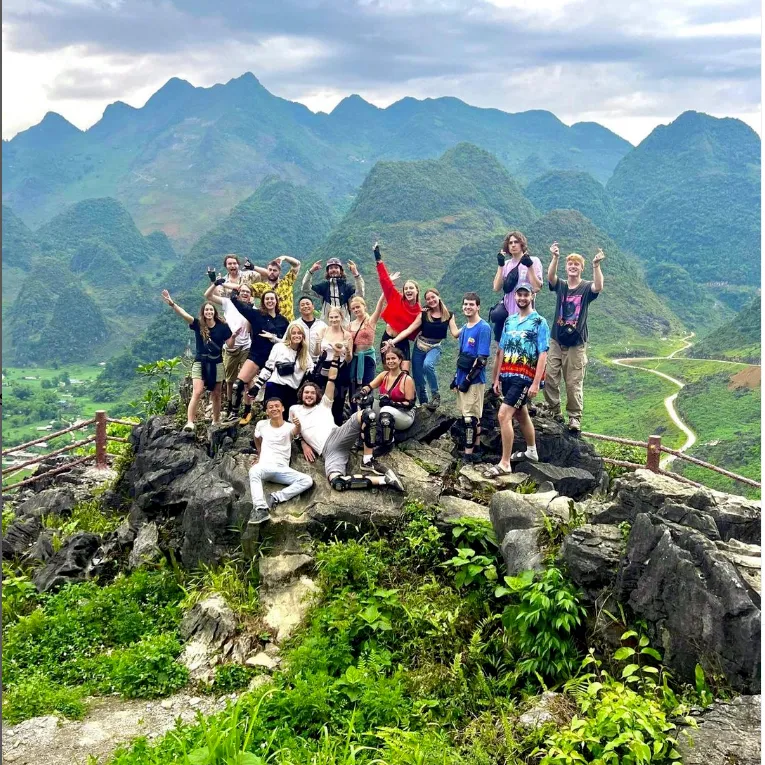
Make a detailed itinerary so you don’t miss any attractive places
The Ha Giang Loop is a journey that thrives on spontaneity, but not having a detailed itinerary can lead to unnecessary stress and missed opportunities. Many travelers make the common mistake of setting out without a clear route or plan. While serendipitous adventures can be rewarding, the Ha Giang Loop’s challenging terrain and remote location demand a more structured approach.
A well-thought-out itinerary helps you manage your time effectively, ensuring that you don’t miss out on must-see attractions. It allows for adequate rest stops and helps avoid unexpected delays. This loop covers about 350 kilometers of winding roads, where distances between destinations can often be deceptive.
Benefits of a Detailed Itinerary
| Criteria | Importance |
|---|---|
| Time Management | Efficient travel and sightseeing |
| Stress Reduction | Avoid the chaos of unplanned travel |
| Safety | Ensures access to accommodations and facilities |
| Route Familiarity | Prepares for remote and challenging sections |
By meticulously planning your route, starting and ending points, and key stops, you can experience the best the Ha Giang Loop has to offer. Detailed maps, GPS, and distance metrics become pivotal tools in crafting your journey. An itinerary helps balance the spirit of exploration with the practicality of travel, ensuring that your trip is as enriching as it is adventurous.
2. Riding & Navigation
2.1 Not Choosing the Right Motorbike
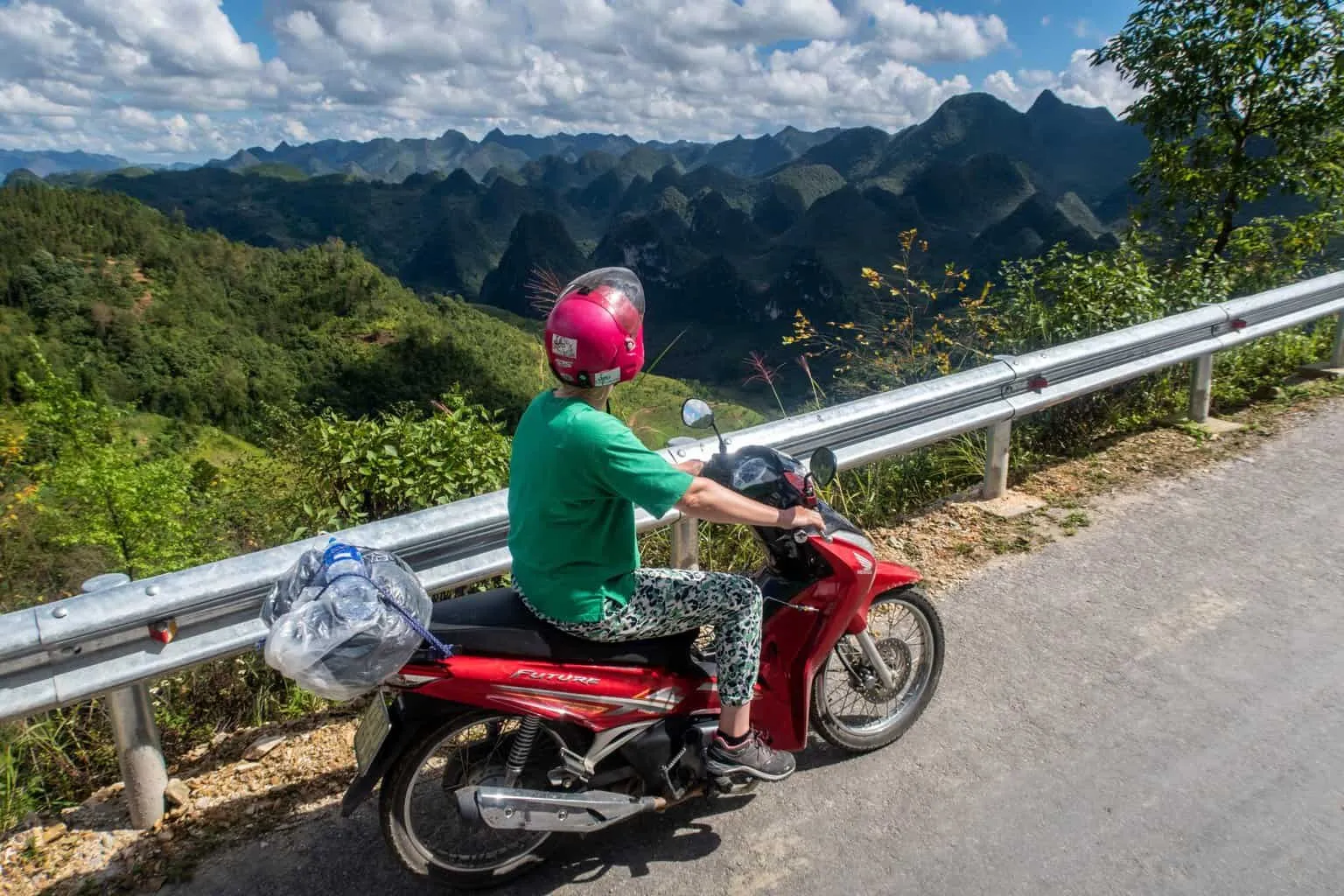
Honda XR150 is the vehicle chosen by many people to get to Ha Giang Loop
In the rugged expanse of the Ha Giang Loop, the motorbike becomes your faithful companion. However, not choosing the right motorbike can spell trouble. A common oversight, neglecting this can lead to discomfort, breakdowns, or even accidents.
According to Karst Plateau’s experience, a Honda XR150 with a manual transmission is highly recommended. This motorbike offers better handling and stability on challenging terrains. Compare this to a semi-automatic or automatic motorbike, which can struggle with steep inclines and poor road conditions. Riding comfort is crucial, considering the loop’s rough patches where every bump can be felt acutely.
Comparison of Motorbike Options
| Motorbike Type | Pros | Cons |
|---|---|---|
| Honda XR150 (Manual) | Better handling, stability, durability | Requires experience with manual riding |
| Semi-Automatic | Easier to ride, less challenging | Less stability struggles with inclines |
| Automatic | Simplest to operate | Least suited for rugged terrain |
Choosing the right motorbike can transform your journey from a rough ride to a smooth adventure. The roads can be narrow and winding, requiring a bike that can handle such conditions with ease.
2.2 Not Being Aware of Road Conditions
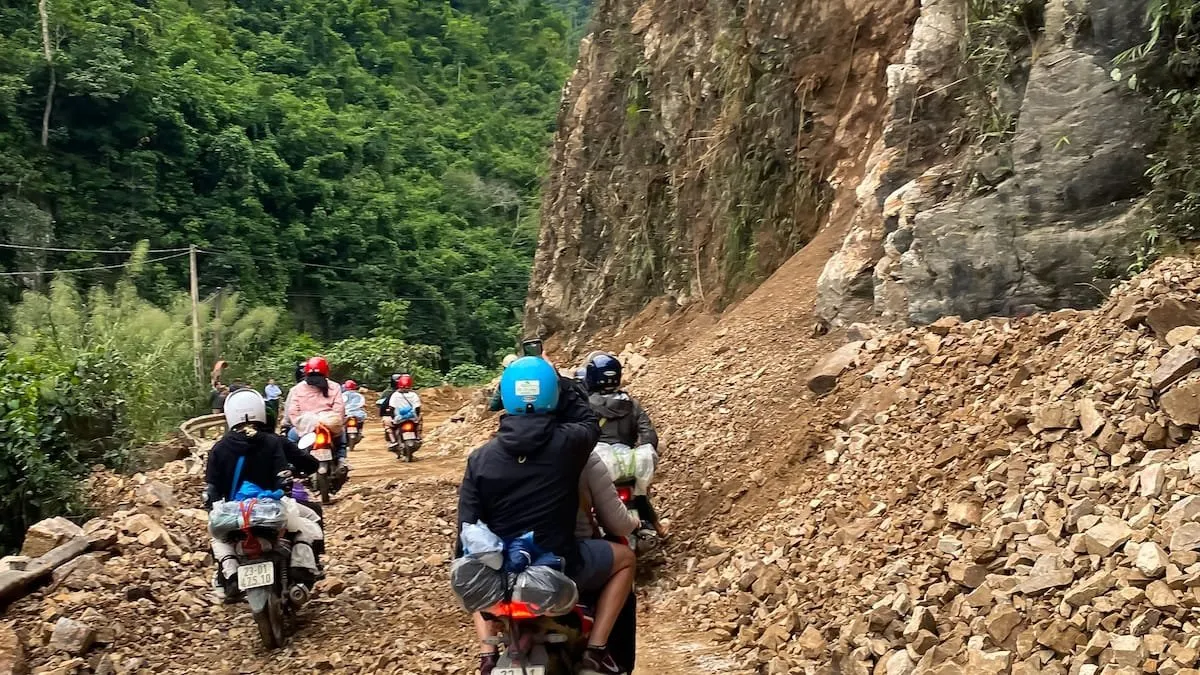
Taking proactive steps towards understanding and preparing for road conditions ensures a smoother and safer journey
The roads of the Ha Giang Loop present unexpected challenges that require a keen awareness to navigate safely. Underestimating the road conditions is a grave error that can lead to dangerous situations. The terrain is marked by potholes, loose gravel, and treacherous turns, which can be perilous for the uninformed.
Key Tips for Navigating Road Conditions
- Check Weather Forecasts: Understand that sudden weather changes can make roads slippery and hazardous.
- Ride Cautiously: Especially on winding and steep sections. Adhering to speed limits and being vigilant about road hazards such as livestock or unexpected potholes is critical.
- Avoid Night Riding: Reduced visibility at night increases the risk. The roads can be difficult to navigate in the dark, with potential for unseen obstacles.
- Offline Maps: Download them to ensure you’re not stranded without navigation in remote areas where cell service is unreliable.
- Guided Tours: If you’re not confident in your navigation skills, consider joining a guided tour or riding with an experienced local.
Taking proactive steps towards understanding and preparing for road conditions ensures a smoother and safer journey. While the landscape may be harsh and unforgiving, being aware and prepared will allow you to navigate the Ha Giang Loop with confidence and ease.
2.3. Not Checking Your Bike Before Leaving
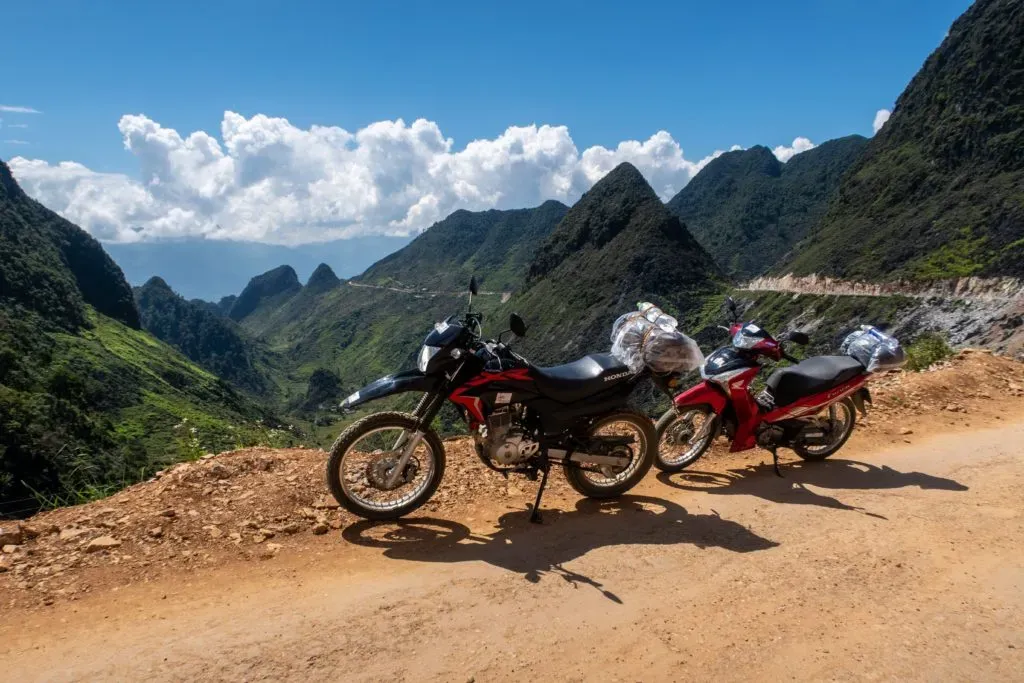
You should check your motorbike before embarking on the Ha Giang Loop
Before embarking on the Ha Giang Loop, failing to check your motorbike’s condition is a mistake that many travelers regret. Ignoring bike maintenance can lead to dangerous and costly breakdowns, especially in remote areas where repair facilities are scarce.
It is essential to conduct a thorough check of the condition of your motorcycle before and during the trip. This is 1 of 10 mistakes to avoid on the Ha Giang Loop. Before moving, you should check the tires, brakes, lights, and fuel level. Carrying basic tools and knowing how to perform minor repairs can be a lifesaver.
Motorbike Pre-Ride Checklist
| Essential Checkpoints | Importance |
|---|---|
| Tire Condition and Pressure | Ensures safe handling and balance |
| Brake Functionality | Critical for safe riding |
| Lights and Indicators | Essential for visibility and communication |
| Fuel Level | Prevents being stranded |
Proper motorbike maintenance is not only about safety; it’s also about ensuring that your trip is hassle-free and enjoyable. Whether renting a motorbike or using your own, thorough checks before setting out can save you from potential disasters. Neglecting this crucial step can turn an exhilarating adventure into a frustrating ordeal.
Embarking on the Ha Giang Loop is undoubtedly one of the most thrilling adventures one can undertake in Vietnam. However, the journey demands thorough preparation and thoughtful planning to avoid common pitfalls. By avoiding the 10 mistakes that Karst Plateau has shared with you, you can fully immerse yourself in the majestic landscape and cultural richness of the Ha Giang route, turning your journey into an unforgettable adventure.
